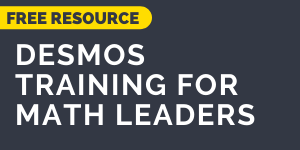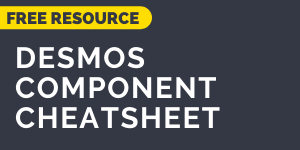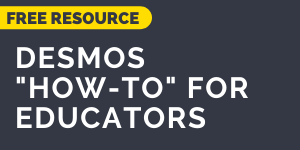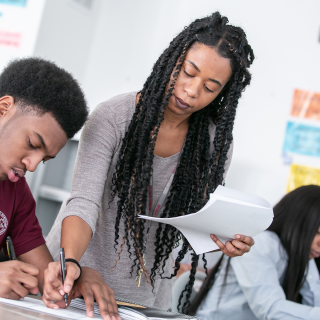Before the pandemic shut down school buildings, one of Lauren Masco’s best teacher moves was strategically walking around the classroom to observe students’ math work. Based on trending student thinking, Lauren would be able to quickly determine which students she should call on in order to orchestrate discourse based on students’ mathematical understandings and misconceptions. As a result, her 8th graders passed the Algebra I state exam at rates 30 percentage points higher than the state average.
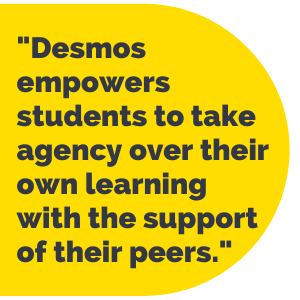
Like many teachers across the country, Lauren has had to rethink her best teacher moves now that she can’t walk around the classroom because she does most of her teaching via Zoom. And while nationally normed assessments are not available, data from her class shows that her students continue to excel during virtual learning, in part due to her ability to transfer those teacher moves to an online environment.
But how, you may ask? The answer is Desmos, a free online platform that allows teachers like Lauren to transfer the best practices of in-person math instruction to a virtual environment. At Uncommon, we believe a deep conceptual understanding of mathematics requires students to engage in discourse, which occurs when teachers present students with rich mathematical tasks grounded in higher-order thinking questions followed by students selecting a solution pathway that is shared and built on by their peers. Then, students are given a chance to discuss their solution pathways and what they learned from the task, while listening to and building off the ideas of others. When remote learning began, teachers like Lauren needed to find the technology that allows this beautiful sequence to occur virtually, and Desmos was a perfect match. Desmos empowers students to take agency over their own learning with the support of their peers.
Take for example the launch of a new lesson in Lauren Masco’s classroom. Students are presented with the following task:
Is -6 a solution to the following inequality? Show or explain how you know.
-8-2x > 10
As you watch the clip of Lauren’s classroom below, you’ll notice that she makes several discourse moves, made possible by Desmos functionality:
- Activate: Lauren tells students today is the last day of working with inequalities in one-variable, and frames the objective of the day: “Today we’ll continue evaluating solution sets, and what values make our inequalities true.” By doing this, she is also reminding students of some key vocabulary they’ll want to use in their own responses.
- Launch the Discourse Cycle: Lauren uses screenshare to post the question for students to view.
- Everybody Writes: Lauren asks students to record their answers in Desmos so she can see student thinking.
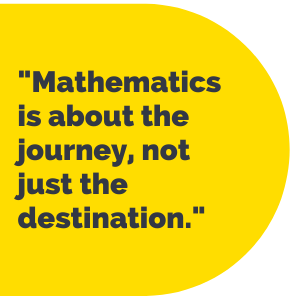
- Monitor: Lauren uses the Desmos dashboard to monitor student thinking, and identify which students she’d like to call on during discourse. Additionally, as Lauren monitors she is able to strategically provide individualized prompts to meet students at their level.
- Strategically Call: Lauren uses the data she gathered from the Desmos dashboard to pre-call two students.These students used different strategies to solve, and she wants to ensure both strategies are being shared and celebrated during discourse, which shows students making sense of problems and identifying an entry point versus a memorized strategy.
- Use Student Work to Anchor Discussion: Lauren uses the snapshot feature in Desmos to visually present the student responses to the class so all participants can easily follow along during discourse.
By leveraging student work and student strategies in the classroom discussion, Lauren communicates to students that mathematics is about the journey, not just the destination. Different strategies can be used to solve the same problem, and each strategy has its own benefits and drawbacks. Lauren is also reaching more learners—students who may have used the substitution method, (rather than the solving method) are validated by seeing their idea showcased, too.
Whether still teaching students remotely or socially distancing in the classroom, Desmos provides the ability to to monitor student progress and accuracy and then select student responses to share with the class to facilitate discourse. Most importantly, the program and all its features and various demos/tutorials that they run for educators around the country are free and accessible. We’ve created resources that will help you implement Desmos in your school or classroom. You can get started with a ready to use teacher training we created for the Desmos Dashboard and Snapshot features, as well as a step by step “how to” document and cheatsheet, which are outlined below. These resources will allow you to increase math discourse in your classroom tomorrow.
Resources for Implementing Desmos in Your School or Classroom
- Desmos Training: This PowerPoint deck can be used as a plug-and-play Professional Development session for leaders to train math teachers on how to leverage Desmos in their classrooms, or for math teachers to teach themselves the functionalities of the platform. It focuses specifically on two important features: the Desmos dashboard and the Snapshot tool.
- Desmos Component Cheatsheet: This document provides a brief overview of each component an educator can use when creating an “activity” or lesson on Desmos. Components range from utilizing the sketch feature, creating multiple choice questions, creating a table of values, and everything in-between. Educators can use this cheat-sheet to quickly acquaint themselves with each component.
- Desmos “How To”: This document provides educators with a step-by-step process on how to create an activity on Desmos and how to monitor that activity once students are engaging with the content. Educators can learn how to restrict the “screens” a student can engage in over any given time, how to monitor the work that students are producing, how to share snapshots of student work, and much more!
Educational platforms will never replace good teaching. But we love it when a platform allows teachers to simulate online some of the most effective in-classroom techniques, especially those related to discourse. In our next blog post later this month, we will dive deeper into the discourse moves that we got a glimpse of in Lauren Masco’s classroom and share free resources and videos to help you deepen discourse techniques across content areas in your own classroom.
Click below for PDFs of all the resources referenced above:
Related Posts:


